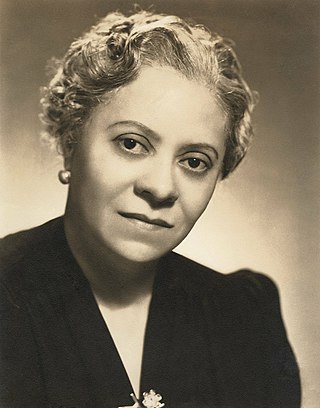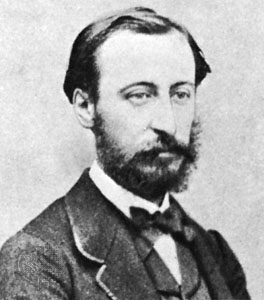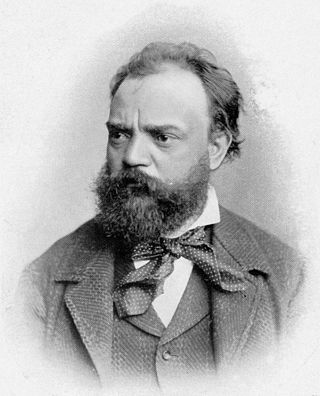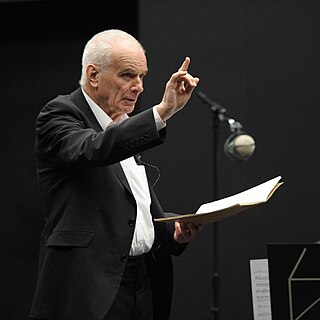
Florence Beatrice Price was an American classical composer, pianist, organist and music teacher. Born in Little Rock, Arkansas, Price was educated at the New England Conservatory of Music, and was active in Chicago from 1927 until her death in 1953. Price is noted as the first African-American woman to be recognized as a symphonic composer, and the first to have a composition played by a major orchestra. Price composed over 300 works: four symphonies, four concertos, as well as choral works, art songs, chamber music and music for solo instruments. In 2009, a substantial collection of her works and papers was found in her abandoned summer home.

The Piano Concerto No. 4 in C minor, Op. 44 was composed by Camille Saint-Saëns in 1875. It was premièred on October 31, 1875, at the Théâtre du Châtelet of Paris, with the composer as the soloist. The concerto is dedicated to Anton Door, a professor of piano at the Vienna Conservatory. It continues to be one of Saint-Saëns' most popular piano concertos, second only to the Piano Concerto No. 2 in G minor.

Anton Bruckner's Symphony No. 3 in D minor, WAB 103, was dedicated to Richard Wagner and is sometimes known as his "Wagner Symphony". It was written in 1873, revised in 1877 and again in 1889.

The Symphony No. 1 in B♭ major, Op. 38, also known as the Spring Symphony, is the first completed symphonic work composed by Robert Schumann.
The Symphony in E, first performed on March 10, 1866, was the only symphony composed by Arthur Sullivan. Since Sullivan's death, it has frequently been called the "Irish" Symphony as it was composed in Ireland, and as a homage to Mendelssohn's "Scottish Symphony".
Symphony No. 1 in G minor, Op. 7, FS 16 is the first symphony of Danish composer Carl Nielsen. Written between 1891 and 1892, it was dedicated to his wife, Anne Marie Carl-Nielsen. The work's première, on 14 March 1894, was performed by Johan Svendsen conducting the Chapel Royal Orchestra, with Nielsen himself among the second violins. It is one of two symphonies by Nielsen without a subtitle.

The Symphony No. 3 in E♭ major, Op. 10, B. 34, is a classical composition by Antonín Dvořák.
Symphony No. 2 in A major, subtitled Im Frühling or In Spring, is the second symphony by American composer John Knowles Paine.

The Symphony No. 2 by Peter Maxwell Davies was commissioned by the Boston Symphony Orchestra in celebration of its centenary, and was composed in 1980. Seiji Ozawa conducted the world premiere with the BSO on 26 February 1981 at Symphony Hall, Boston. The same forces performed the New York premiere on 4 March that year at Carnegie Hall.
The Symphony No. 1, H. 289, is an orchestral composition by the Czech composer Bohuslav Martinů.

The Symphony in E minor is the first symphony written by the American composer Florence Price. The work was completed in 1932 and was first performed by the Chicago Symphony Orchestra under the conductor Frederick Stock in June 1933. The piece was Price's first full-scale orchestral composition and was the first symphony by a Black woman to be performed by a major American orchestra.
The Piano Concerto in C-sharp minor, Op. 45, is a composition for solo piano and orchestra in four movements by the American composer Amy Beach. The work was composed between September 1898 and September 1899. It was first performed in Boston on April 7, 1900, with the composer as the soloist and the Boston Symphony Orchestra performing under the conductor Wilhelm Gericke. The composition is dedicated to the musician Teresa Carreño and was the first piano concerto by an American female composer.

The Symphony No. 3 in C minor is a symphony for orchestra composed by Florence Price in 1938. The work was commissioned by the Works Progress Administration's Federal Music Project during the height of the Great Depression. It was first performed at the Detroit Institute of Arts on November 6, 1940, by the Detroit Civic Orchestra under the conductor Valter Poole. The composition is Price's third symphony, following her Symphony in E minor—the first symphony by a black woman to be performed by a major American orchestra—and her lost Symphony No. 2.
The Concerto for Piano and Orchestra is a piano concerto by the American composer John Corigliano. The work was commissioned by the San Antonio Symphony and was first performed on April 7, 1968, by the pianist Hilde Somer and the San Antonio Symphony under the direction of Victor Alessandro. The piece is dedicated to John Atkins.
The Symphony No. 3 is a composition for orchestra by the American composer Ned Rorem. The work was first performed by the New York Philharmonic under the direction of Leonard Bernstein at Carnegie Hall on April 16, 1959.
Symphony No. 1 in G minor, "Sérieuse", is an orchestral work by Swedish composer Franz Berwald. It was premiered on December 2, 1842 in a concert at the Royal Opera, Stockholm given by the Swedish Royal Court Orchestra conducted by the composer's cousin Johan Fredrik Berwald. This first performance was not a success, leading to this symphony being the only one of Berwald's mature symphonies to be performed during his lifetime;.

The Symphony No. 2, Op. 14, is a three-movement orchestral composition written from 1938 to 1939 by the Swedish composer Dag Wirén. Despite its numbering, the Second Symphony represents Wirén's first contribution to the form as a professional. Swedish conductor Sixten Eckerberg premiered the new symphony with the Gothenburg Symphony Orchestra in Gothenburg on 13 October 1940. Although the public received the premiere positively, the critics cautioned that the new work was mildly derivative of Carl Nielsen. At 30 minutes, the Second is the longest of Wirén's four essays in the genre, as well as, stylistically, the most late-Romantic and pastoral of the set.
The Symphony No. 3 is a symphony for orchestra by the American composer Ellen Taaffe Zwilich. The work was commissioned by the New York Philharmonic to commemorate their sesquicentennial anniversary. It was first performed by the New York Philharmonic conducted by Jahja Ling on February 25, 1993. The symphony is dedicated "with love and admiration" to Kurt Masur and the New York Philharmonic.
Nikolai Myaskovsky's Symphony No. 5 in D Major, Op. 18, was written in 1918. It was premiered on 18 August 1920 by the conductor Nikolai Malko.
The Symphony No. 3 in B minor by the Ukrainian composer Borys Lyatoshynsky was completed in 1951, with the final movement themed "Peace will conquer war." The symphony was first performed in Kyiv on 23 October 1951, by the Kyiv Philharmonic, conducted by Natan Rakhlin. Criticised by the Soviet authorities on ideological grounds, the composer was forced to rework the symphony, and to remove the subtitle of the finale. The first performance of the revised version took place in Leningrad in 1955.







